The Home Depot near us advertised a small 600W (860VA) generator for $165 and some change.

Now I won’t go into a lot of useless details except to say it’s got a very small 4 cycle 40cc engine and just as small .4 gallon gas tank. (ESI860i) It is advertised that it will provide 50% load (350W) for “Up To” 3 hours. (I did not want to mix oil with the fuel so 2cycle was not an option.) Still this generator comes in at a measly 25Lbs!
My intent for this generator was to power a full size refrigerator that draws about 175W and maybe a little more during a defrost cycle. (But certainly much less than the 600W rating of the generator.)
I ordered one from THD and picked it up a couple weeks later. To my surprise it looked like they threw it off the truck. The box was heavily damaged when I received it.
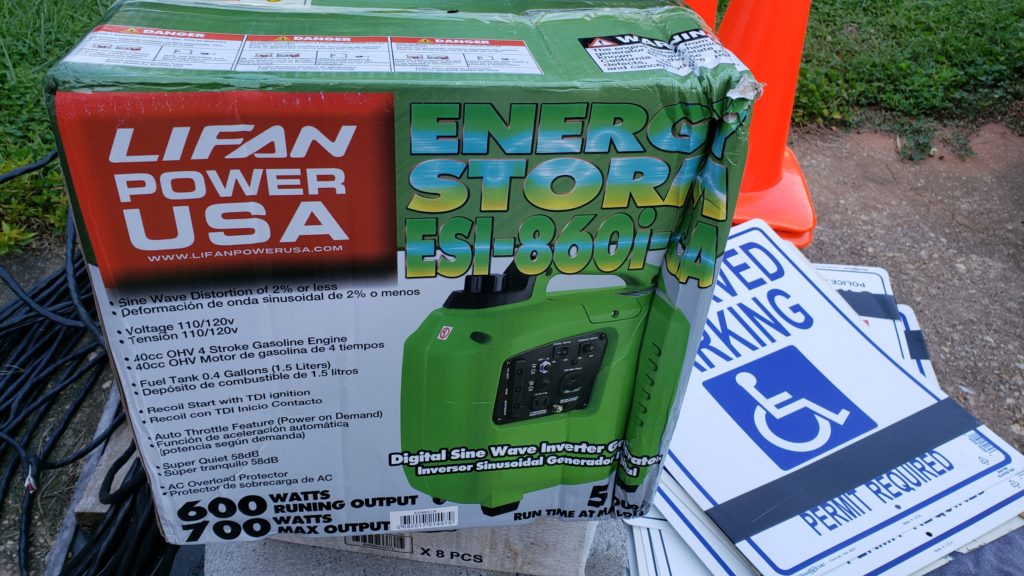
Still, the generator appeared to suffer minor damage and did run for the first couple days. (I found out later that the oil level sensor was permanently damaged by the rough handling and had to be bypassed.)
I tried to break in the generator by running it at idle for an hour or so then at high idle for another hour. I put a light 60W load on it and ran it for two more hours. I filled the gas tank and hooked it up to 300W load and ran it for maybe 3 tanks about 10 hours before changing the oil.
I was happy enough with the performance to purchase two more generators while they were still on sale @ 30% off. I ran the generator as much as I could during the next few days with the 300 W load and it seemed to provide it with moderate difficulty. The generator eventually refused to run and the low oil light could not be extinguished.
The two additional generators arrived and I performed the same break-in routine I did with the first one. One of the generators was having great difficulty providing the 350W load and would trip offline at about 450 watts. (Much less than the rated 600W) So with three generators at my feet, one refused to run, one couldn’t provide much more than half its rated power and the third seemed to be running ok. The reliability was not as good as I had hoped. (My coworker had warned me about buying these cheep generators.)
The generator that performed the best still could not support a 600W load, it would trip offline about 450W. (I think the advertised capability was stretched a little with the “Up To” caveat.) After hours of research the efficiency was not as good as I had hoped, a 2200W generator could run about as long on a gallon of gasoline as this 600W one. (Which would be MUCH more desirable to have the additional surge capability.) Further, the Yamaha had a 1.1Gallon tank so it would run 10 hours without needing to be fueled or needing oil! (The surge capability would eliminate the need for a UPS to supply the additional current needed to start the fridge.)
I am still on the fence about getting a Propane powered generator, they burn a LOT of propane!
I disassembled the generator that refused to run and the oil sensor was indeed stuck, I pushed the pin out of the connector to regain use of the first generator that produced much more power then generator #3. The only major problem with #1 is that there’s something wrong with the fuel pump. It stops running at about half a tank. LIFAN sent me two fuel pumps, neither of them fit my generator. What I did learn when I attempted to replace the fuel pump was that the vacuum side was full of fuel. I dumped the fuel out and reassembled the generator with a repaired (Frankenstein) inverter module and it ran fine for several tanks of fuel.
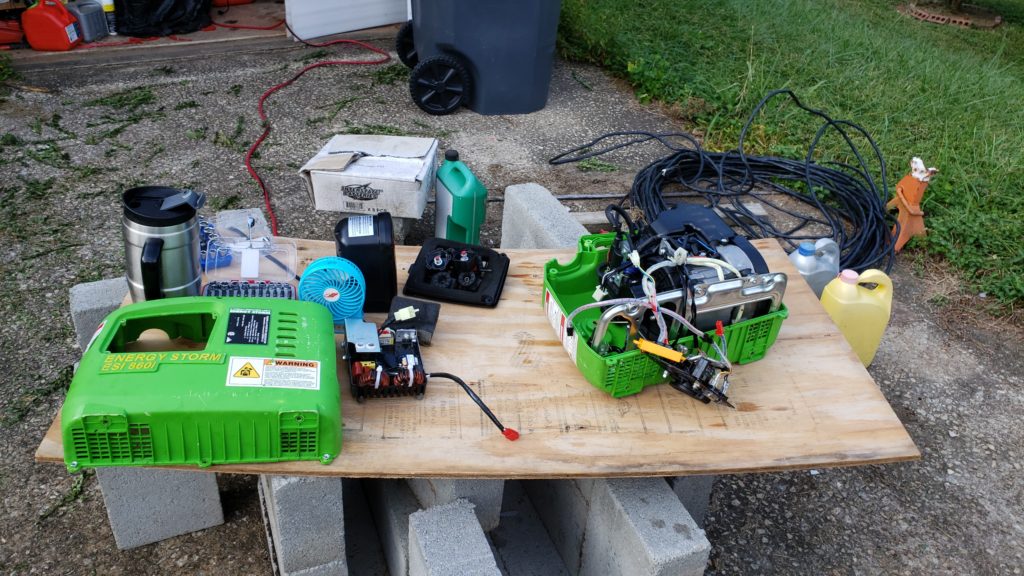
Generator #1 and Generator #2 I am almost happy with their performance. They consume enough oil to need replenishment after 6 hours at 300W. A full tank might last three hours before running out of gasoline. (There is no sight glass, the only way to see the fuel is to take off the gas cap.) I am rather surprised at the poor performance of generator #3, I changed out the inverter module and that didn’t help anything. (I assume at this point that the alternator itself is not as efficient and cannot supply the power as the other two that seem to be able to without difficulty.)
I bought a forth generator when they went on sale again. I ran it though the same break-in process that I did with the first three. When I finally put a load on the generator it had no guts at all and tripped offline. Further research over the next couple days revealed that the exhaust had a constriction of some sort and the engine backpressure caused the engine to loose most of it’s torque.
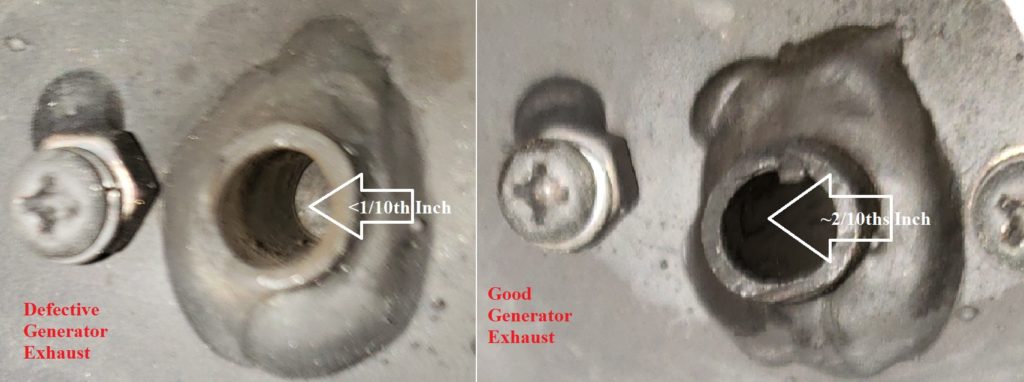
LIFAN didn’t want me to return it to THD even though I’ve only had it for 5 days. They are sending a UPS pickup to repair the generator under warranty. So if you’ve managed to follow this, I have two running and one limping generator in the garage with a fourth being repaired under warranty. After two weeks they said there was nothing wrong with the generator and wanted a credit card to ship the unit back. $30 and three days later I found out that the generator still would cave in at 350W. (Not sure how they managed to get it to support 550W.)
LIFAN shipping came through with a new generator to replace #4 with the bad exhaust after I told them it still wasn’t fixed. (Keep in mind that I could have returned it to THD since it was only 4 days old at that point.) The new generator arrived and I didn’t like the choke lever sticking out of the box.
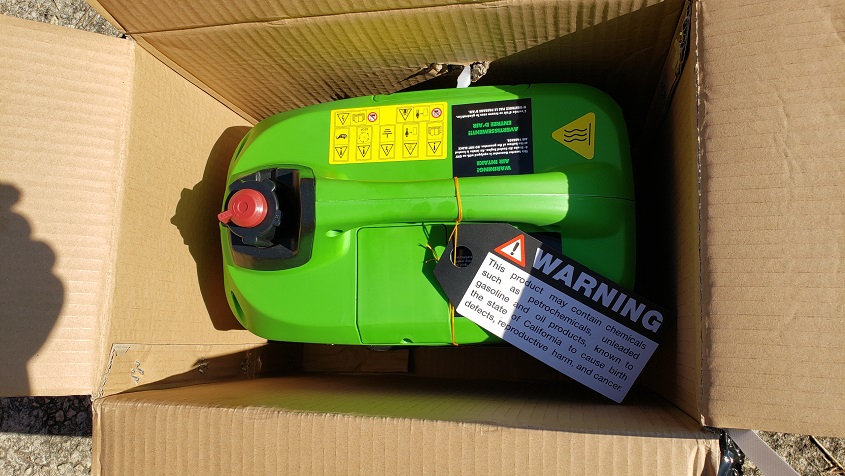
I pulled the maintenance cover and the air filter cover to take a look at the choke vane in the carburetor. The vane was not inserted properly and prevented the lever from rotating all the way.
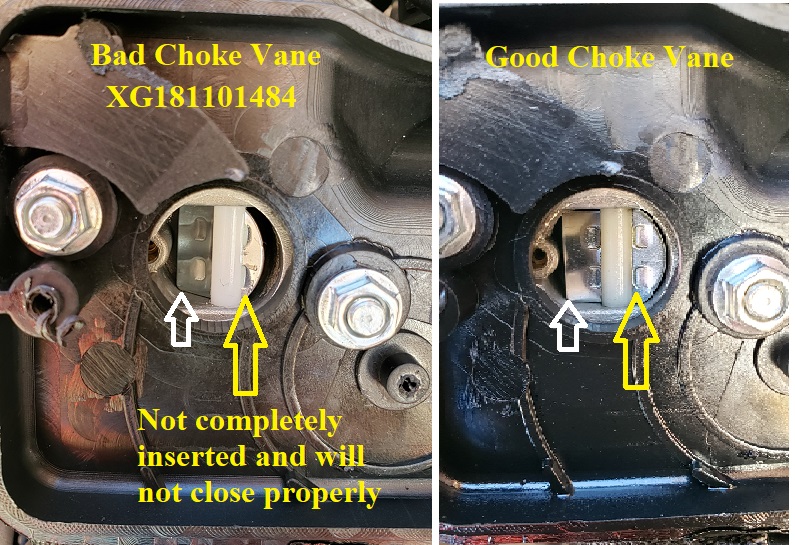
I pushed the vane as far as I could and it allowed the lever to operate almost normally. The load tests on the generator passed with flying colors. The one remaining problem child was generator #4, I got out a drill and punched a very small hole into the exhaust manifold. Cranked up the generator and that hole along with the exhaust port was sufficient for the engine to run properly under heavy load.
If you’ve been keeping up, I now have FIVE running generators!
For comparison I looked online for the “Best” generator for fuel efficiency. The Yamaha 2200VA generator makes about 4KWH out of a gallon of fuel. The LIFAN ESI 860i makes only 2KWH from a gallon of gas and has severe limitations because of the small engine size. The assumption at this point is that the sales department stretched the specifications to the limits of the engineering to make it look better. Then when we (The customers) bought the generator and realized the number of shortfalls we would bring it back and buy a more expensive generator at the same store. (Using the credit from the ESI 860i)
I’ve learned a lot over the last several weeks. The last small engine I owned was a gasoline lawn mower. I don’t remember changing that oil more than once per year. This generator’s oil gets fairly dirty after 4 tanks of gasoline, say 10-12 hours. Not to mention oil had to be added at 6 hours or it would not start at 9 hours. I ran 5W20 oil in Generator #1 for about three hours with 60W load in an attempt to clean the engine since being my first of the four, it was run so long without changing the oil. The 5W20 oil wasn’t real dirty, but it was too risky to keep running the generator at such a lightweight oil.
Over the last month I’ve enjoyed playing with these generators. I had long forgotten the pleasure of working on mechanical things. In many ways they are simpler than the computers and electronics that I spend most of my working hours trying to coax them into doing what we need them to do.
Generators have always fascinated me, they can run for insanely amounts of time without needing replacement parts or adjustments. Feed them their fluids and they run most of the time. These LIFAN generators caught me off guard, I hadn’t planned on disassembling them to do simple maintenance. Normally, easy access is granted for things like the air filter. The air filter on these tiny generators requires the generator case be split in two and the motor removed from the plastic enclosure to clean the air filter! When I was talking to LIFAN, they talked as though breaking down the plastic enclosure was something they planned on the average consumer to do. I cannot imagine my daughter (who is quite talented), taking these generators apart in her apartment. (Neither of us have a useable garage for this sort of maintenance.) Being in the military I am used to having well written service manuals, LIFAN has a TERRIBLE manual. There’s NO way that these generators should run 90 hours without an oil change. I also had not counted on how finicky the output power was. They are “Rated” at 600W, but they often cave in at 540W and drop the output until the generator is shut down and restarted. All I really needed was 175W, they were rated at 600W. Where is the math on that one.


